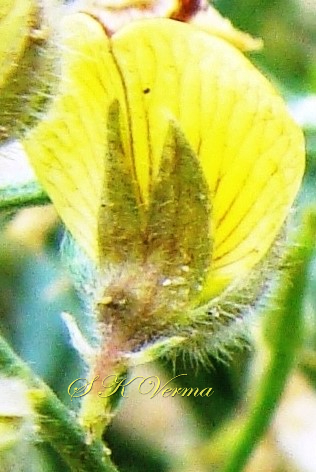CROTOLARIA
Crotolaria
L., Sp. Pl. 2: 714. 1753; Gen. Pl. ed. 5. 320. 1754; Baker in Hook. f., Fl. Brit. Ind. 2: 65. 1879; Polhill, Kew Bull. 22: 169. 1968; Fl. Pak. @ eFloras.org p. 40; Li et al., Fl. China @ eFloras.org 10:105.
Herbs or shrubs, rarely small trees. Stem terete or angular. Stipules filiform to foliaceous or lacking. Leaf simple or palmately 3-foliate or rarely up to 7-foliate. Inflorescence terminal, leaf-opposed or axillary racemes, occasionally condensed and head like. Flowers generally bracteate, pedicellate, bracteolate, bisexual, zygomorphic, 5-merous, perigynous. Calyx subcampanulate, with 5 subequal lobes or 2-lipped with 3 narrow abaxial lobes and 2 broader adaxial lobes, often connate. Corolla usually yellow, less often white, purplish red or dark purplish-blue, papilionaceous; vexillum usually orbicular or oblong, basally almost always with 2 appendages inside; wings oblong or narrowly elliptic; keel rounded to angled, generally extended into a well-developed beak. Stamens 10, monoadelphous, dimorphic, 5 usually shorter with oblong and basifixed anthers alternating with 5 longer with ovoid and dorsifixed anthers. Monocarpellary, ovary sessile or stipitate, with or without trichomes, with 2 to many ovules, placentation marginal; style long, basally curved or geniculate (bent abruptly, as a knee, L-shaped), almost always with 1 or 2 lines of trichomes on apical part; stigma minute, oblique rarely 2-lobed. Legumes sessile to stipitate, oblong, cylindric, ovoid- globose or rarely rhombic, usually conspicuously inflated, rarely compressed, 2- to many- seeded, with or without a stipe. Seeds obliquely cordate to oblong-reniform, with a definite hilar sinus.
712 species
Crotolaria burhia
Crotolaria burhia
Buch.-Ham. ex Benth. & Hook., Lond. J. 2: 474. 1843; Baker in Hook. f., Fl. Brit. Ind. 2: 66. 1879; Cooke, Fl. Bomb. Pres. (Reprint ed.) 1: 311. 1958; Parker, For. Fl. Punj. ed. 1: 128. 1918 (Reprint 1973); ed. 3: 124. 1956; Ali in Biologia 12: 26. 1966; Fl. Pak. @ eFloras.org p.45; Crotolaria burhia var. tomentosa Boiss., Fl. Or. 2: 26.1872
A low shrub or undershrub with stiff, sometimes spinescent, erect and spreading often tangled branches, 30-60 cm tall. Twigs often leafless or nearly so, striate and densely pubescent. Leaves few, deciduous, simple, 0.6-2.5 cm long, 3-10 mm broad, oblong, subsessile, acute, obtuse, pubescent on both surfaces with adpressed silky hairs, margin thickened, lateral veins obscure; stipules absent. Inflorescence elongated terminal raceme, 6-12-flowered. Pedicels very short. Flowers bracteate, bracteolate, bisexual, zygomorphic, 5-merous, perigynous; bracteoles 2, small. Calyx 5, fused at base, 8-9 mm long, densely pubescent, lobes lanceolate. Corolla 5, papilionaceous, yellow with orange lines, slightly exceeding calyx; vexillum ovate, claw short; wings shorter than vexillum, oblong; keels equalling wings, its petals united, much incurved and distinctly beaked. Stamens 10, monoadelphous, anthers dimorphic; alternately short and dorsifixed and long and basifixed. Ovary sessile, ovules few, placentation marginal; style slightly bearded at top and stigma simple.
Legumes 8-9 mm long, 4 mm or less wide, hairy, 3-4 seeded. (Legumes not observed)
Common Names: Burhia Rattlepod; Khimp, Saniya (Hindi)
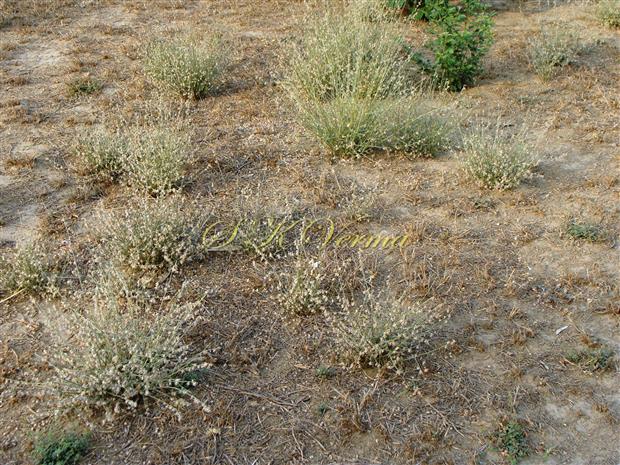
-5180.jpg)
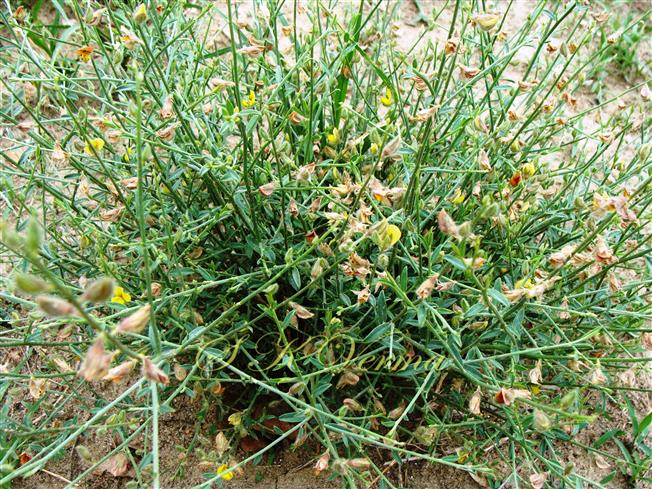
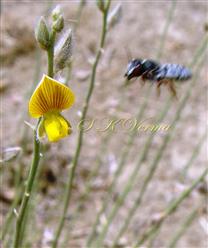
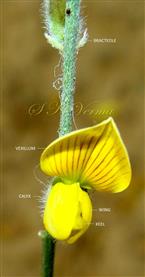
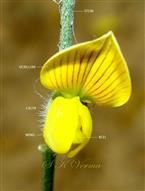
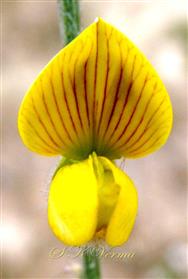
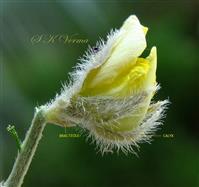
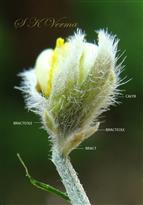



-5180.jpg)







